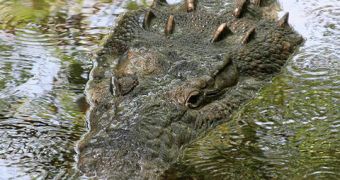According to a new study conducted by experts at the University of California in Los Angeles (UCLA), mammals can now be declared the winners of the evolutionary race, outclassing reptiles in the fight for survival. Fish and birds also moved ahead of reptiles, each exhibiting large species diversity, which means that they were able to better adapt to a number of different environments. Over the past several million years, reptiles simply lived on, but failed to diversify considerably.
“Our results indicate that mammals are special,” UCLA scientist Michael Alfaro, who has been the leader of the new study, explains. Details of the investigation appeared on July 24th in the online early issue of the journal Proceedings of the National Academy of Sciences (PNAS). However, the expert adds, the new finds do not necessarily imply that reptiles are at a greater risk of going extinct than the other animals. The threat is ubiquitous, and affects even very diverse mammal lineages.
In their experiments, the UCLA scientists looked at DNA samples from 47 major vertebrate species, in an attempt to determine whether their biodiversity was high or low. They managed to conclude that most modern birds and mammals, together with several species of reef-living fish, were the absolute winners in the race. At the other end were placed crocodiles, alligators and the “living fossil” tuatara. Funds for the research were provided by the US National Science Foundation (NSF).
The study also revealed that crocodiles and alligators diversified about 1,000 times slower than predicted. It showed that the animals had been around for about 250 million year, and that they only separated into 23 species thus far. “Their species richness is so low, given how old they are,” Alfaro shares. Speaking about tuataras, he adds that, “In the same period of time that produced more than 8,000 species of snakes and lizards, there were only two species of tuatara.”
“It’s a real mystery to biologists how there can be any tuataras given their low rate of speciation. They must have something working for them that has allowed them to persist. In species richness, these are losers, but in another sense, this highlights how unique they are,” the scientist says, quoted by LiveScience.
“The timing of the rate increases does not correspond to the appearance of key characteristics that have been invoked to explain the evolutionary success of these groups, such as hair on mammals or mammals’ well-coordinated chewing ability or feathers on birds. Our results suggest that something more recent is the cause of the biodiversity. It may be that something more subtle explains the evolutionary success of mammals, birds and fish. We need to look for new explanations,” Alfaro concludes.

 14 DAY TRIAL //
14 DAY TRIAL //